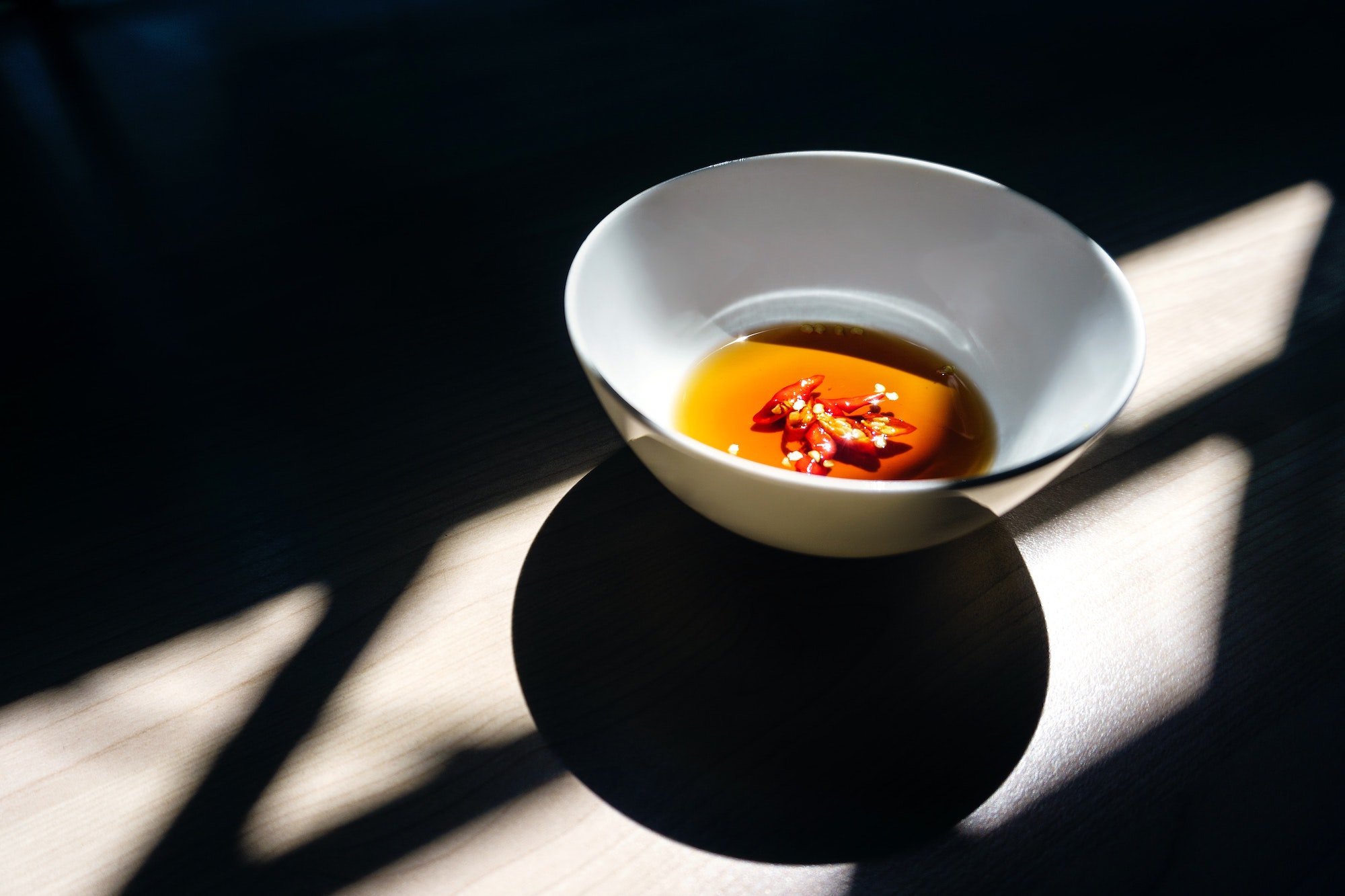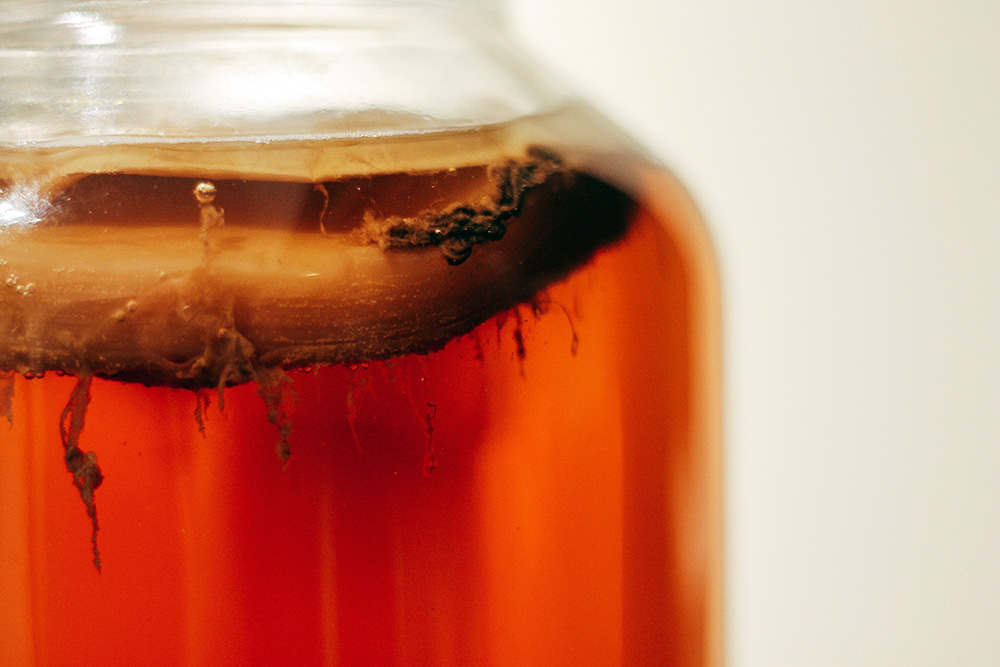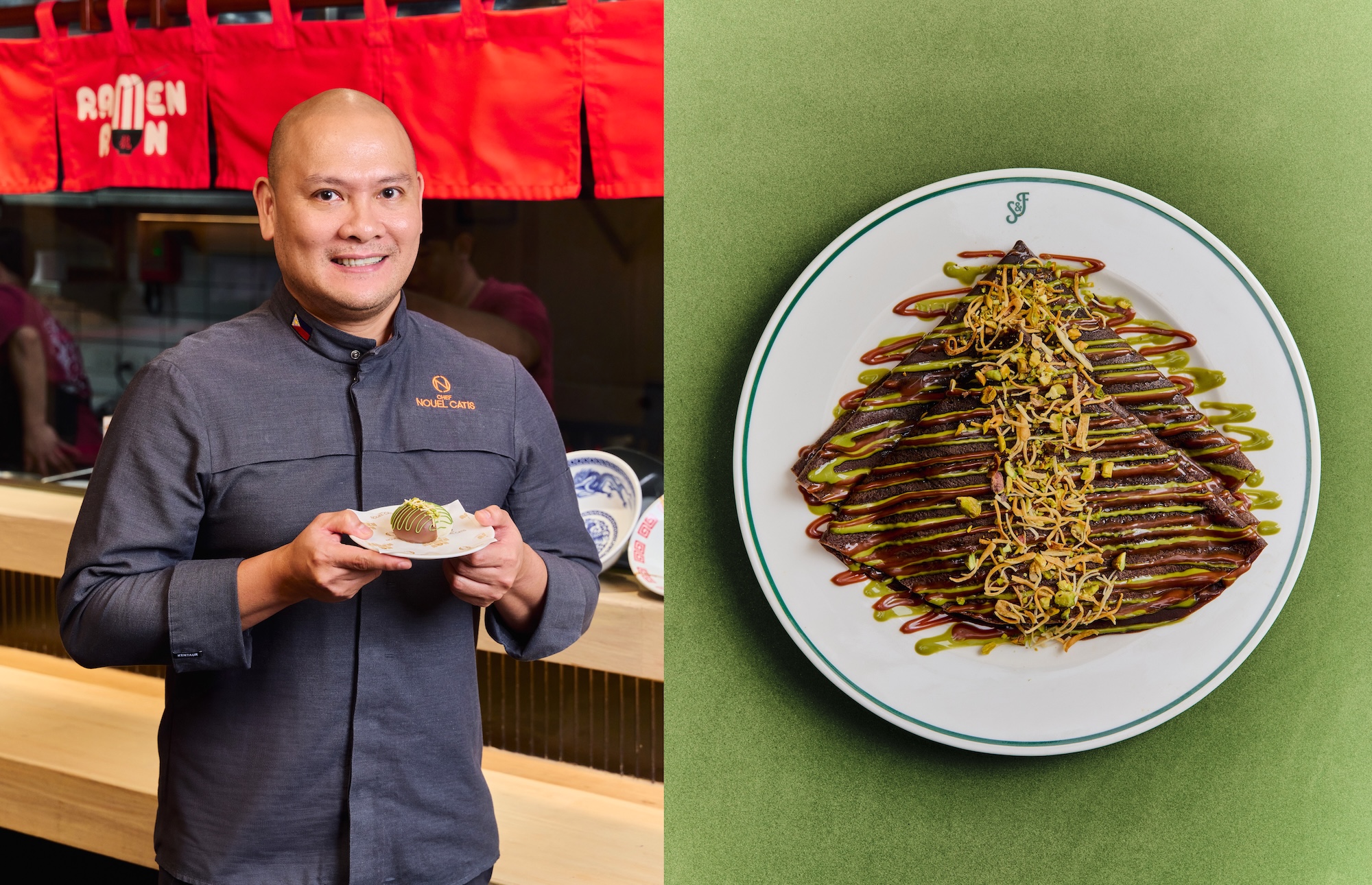Grassroots ferments were once the pride of the Filipino table—until commercialism stepped in and replaced the natural with the artificial
One of early man’s greatest discoveries—right up there with discovering fire—are the byproducts that microbes create. Fruit, honey, and grains get spontaneously converted into alcohols and acids, while animal and plant proteins turn into amino acids and peptides. The resulting stuff, when edible, usually had increased levels of protein, vitamins, and essential amino acids. People eventually developed a liking for the hallmark flavors of fermentation—savoriness, booziness, and sourness. In time, these byproducts became part of our culinary culture and had an impact on commerce.
Because our muggy equatorial existence lends itself to bacterial cacophony, fermentation on our tropical islands remains relatively basic (and mostly spontaneous), giving Filipinos regular access to vinegar, fish slurry, shrimp paste, palm wine, and many other pungent pleasures.
Savoriness
In our urban world of bouillons and bacon-on-demand, it might be difficult to understand the important role that savory, shelf-stable, ready-to-eat food and condiments play in pre-industrial or non-refrigerated societies. They served as backbones for many beloved recipes, easily enriching broths or guisados due to their solubility. Just as importantly, they became, without additional preparation, integral parts of simple spreads around the country—flavorful side dishes that often stood as the main protein of the Filipino rural meal. This was especially invaluable to a people who consider a meal a meal so long as it has rice and something savory.
Just as importantly, they became, without additional preparation, integral parts of simple spreads around the country—flavorful side dishes that often stood as the main protein of the Filipino rural meal. This was especially invaluable to a people who consider a meal a meal so long as it has rice and something savory.
Soy sauce, miso, fish pastes, and fish sauce are examples of savory, salt-heavy Asian fermented protein products. In archipelagic Philippines, tiny fish or shrimp, the proteins of choice, are left to ferment anaerobically with salt, which stops them from rotting. The enzymes in their guts, together with salt-tolerant lactic acid bacteria, facilitate the creation of a meat-flavored mash. The diversity of names, textures and colors of fermented small sea creatures is just what one would expect from an archipelago of thousands of islands. The “liquor” or liquid that rises above the fishy matter is sometimes harvested to make amber-colored fish (or shrimp) sauce.
Bagoong alamang, no doubt one of the most popular savory ferments of the Philippines, is an odorous umami bomb made of salted little krill left to ferment for a few weeks to a few months. While mineral content varies from area to area, the resultant pastes have been found to be some kind of unlikely omega-3-rich superfood, with “potent antioxidative substances, large amounts of PUFA and free amino acid.” On the other hand, analysis of bugguoong a monamon, a northerly ferment made from anchovies, clues us in on the transformative magic of fermentation, and why the Ilocanos live so damn long. “One tablespoon of bagoong after straining or extracting with water furnishes about the same quantity of calcium, about half as much phosphorus, and 13 times as much iron as three tablespoons of milk,” writes Carey Miller in her book, “Foods Used by Filipinos in Hawaii.”

Alas, while Filipinos have maintained their instinctive love for the savory, they have largely, especially in urbanizing areas, replaced such grassroots ferments with widely-advertised and -available, MSG-laden broth cubes and packets of instant mix. Commercial distributors of low-quality, quasi-fermented food, heavy with artificial colors and flavoring, are creating collectively low standards of what bagoong and patis (fish sauce) should taste like with other parts of Asia; these industrial, “enhanced” seasonings have been created to replace our traditional pastes and sauces, fitting right into our cooking habits but barely enriching them. Though the effect of MSG on human beings is still subject to further research, one thing is for sure: We are missing out on easy, tasty nutrition while losing the nuances behind regional dishes.
Sourness
Vinegar-making is a simple pursuit in the tropics. Freshly harvested saccharine liquid, already teeming with microorganisms, starts fermenting with minimal prodding and no starter culture. Left to its own devices, it turns quickly into alcohol and, just as easily, sours. The concentrated sugars in palm sap or cane juice are the most common substrates for microbial transformation into acetic acid, but other minor sour ferments are made from more timid fruit juice or peel and added sugar. All tend to be very tart and mature, save for a few Southern variations, which are perceived by Tagalogs as “unripe” and still mildly alcoholic.

A native of Paoay, Ilocos Norte once confided in me that the secret to his fighting cocks’ vitality was a daily dose of sukang iloco (Ilocano sugarcane vinegar) in their drinking water. That did not surprise me—vinegar is most pervasive in the Ilocos region compared to anywhere else in the Philippines (where it is already a ubiquitous dipping sauce and seasoning). Mothers bathe their feverish children with it. Old folks take a tablespoon in the morning as a tonic. In food, it is used to pickle a myriad astringent or already-sour fruit, and to cut the fat of their heavier dishes such as deep-fried empanadas, deep-fried pork, blood stews, and sausages. Used in the Ilocano vegetable dish, it can balance out the typical salty, fishy and bitter flavors.
The ubiquitous white vinegar we see in local eateries is, unfortunately, usually industrial acetic acid or highly pasteurized versions of traditional products, some shadow of what vinegar really is.
Filipinos sometimes like the subtle acidity of tart fruit or leaves. At other times they douse their meals with one of the many kinds of local vinegar. There are no qualms about having “extremely sour” as the dominant flavor of a dish, with only meatiness (no spices) to add complexity in flavor. Furthermore, since vinegar is both a preservative and bactericidal, its role in soups and stews goes beyond taste. When Filipinos need a dish with staying power (e.g. for all-day parties or for three-hour jeepney rides to pick relatives up from the airport), they cook up pots of adobo (meat stewed in vinegar) or paksiw (fish and garlic poached in vinegar), and reheat these throughout the day. The flavors meld together and by the end of the day, you have a fairly complex dish with a sour, meaty, thick sauce that can be spooned over rice or eaten by itself.
At the very least, most homes and establishments keep a bottle around to use as a dipping sauce. The ubiquitous white vinegar we see in local eateries is, unfortunately, usually industrial acetic acid or highly pasteurized versions of traditional products, some shadow of what vinegar really is. Large companies are offering plastic sachets of processed vinegar in very small town stores, dislodging old, sustainable industries in the span of a few years. As a result, a number of people have put their clay fermenting jars away, unable to compete with the low prices and convenience of the big players.
Booziness
In some small towns in Visayas, you will find people gathered at stalls drinking tuba, a boozy, sometimes effervescent drink made of fermented coconut, nipa or sugar palm sap. They will tell you, as they offer you salt to go with your glass, that this daily habit contributes to their general wellness (and you will believe them, as palm wines are rich in ascorbic and amino acids, and B vitamins, particularly important for almost-vegetarian societies). They will also gather around you because non-locals consuming tuba is an amusing concept for them.
You are not likely to be an instant fan of the beverage. Tuba predominantly tastes like fresh yeast, with other notes that can run the gamut from caramel, sesame oil, and green mango to jasmine, soy sauce, and coconut milk. As with similar grassroots fermented beverages, there is high diversity due to variability in processing techniques, ingredients, and resultant microorganisms. Some producers use a starter mash, while some allow for completely spontaneous fermentation. Still, others employ botanicals to enhance clarity, color, and palatability. Science has recently found that plant additives can inhibit certain microorganisms and allow the predominance of others (e.g., tuba made without tangal mangrove bark, a common additive, had four times as many yeast species than tangal-infused tuba), making for a slightly more consistent product.
Basi is a widely-drunk astringent sugarcane wine used in rituals and community gatherings around marriage, death, and spiritual cleansing. A monopoly on the beverage by the Spanish colonial government didn’t compensate locals fairly for their production and allowed them access to only basi of lower quality.
Early Spanish accounts reveal that when they arrived, the brewing (and distilling) of local alcohol was already in full swing. Alcoholic beverages permeated Filipino dietary, social, and spiritual realms. Such was the case with Ilocanos, who are as passionate about their basi as they are with their vinegar. Basi is a widely-drunk astringent sugarcane wine used in rituals and community gatherings around marriage, death, and spiritual cleansing. A monopoly on the beverage by the Spanish government didn’t compensate locals fairly for their production and allowed them access to only basi of lower quality. This had unfortunate dual effect of impoverishing them and creating widespread social embarrassment, leading eventually to the Basi Revolt of 1807.
Because our muggy equatorial existence lends itself to bacterial cacophony, fermentation on our tropical islands remains relatively basic (and mostly spontaneous), giving Filipinos regular access to vinegar, fish slurry, shrimp paste, palm wine, and many other pungent pleasures.
Such yeasty, traditional, small-scale alcoholic beverages are rarely pasteurized and do not travel well (sometimes turning into vinegar or exploding in transit). As a result, their main consumers, though fiercely loyal, tend to be geographically limited. Over time, their flavor has become an acquired taste for outsiders, sometimes folk from just a few kilometers away whose palates favor the less wild, muted, always available commercial beer or clear spirits. Even children, who used to be routinely exposed to this yeasty flavor through their tuba-raised rice cakes and bread, now snack on neutral-tasting bread leavened with commercial yeast and baking powder. We now cringe when our puto (rice cake) has that boozy, sometimes bitter taste, now described as “funk.”
For decades, our predilection for bold, strong flavors has allowed for large corporations to step in and provide one-dimensional flavors to consumers, subsequently destroying our taste for nuance. Thousands of small-scale producers, unable to survive the large companies’ advertising budgets, distribution networks and unreal shelf life have either closed shop or started using additives and artificial flavors. If our cultural workers could not save our artisans—our guardians of microorganisms, our stewards of minor species, our true tasting experts— perhaps, people of this food-conscious generation will.
Originally published in F&B Report Vol. 14 No. 4













































